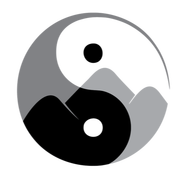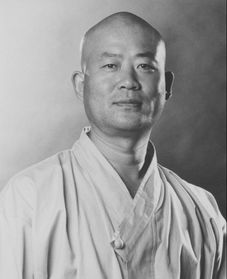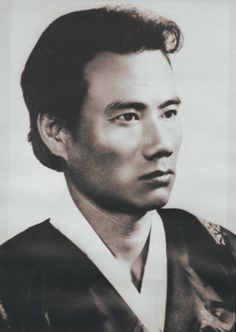LINEAGE
|
In 1967, after nearly one-thousand years as an exclusive mountain practice, SunDo was reintroduced into Korean society by a Taoist master named Chung-San. Inspired by the health-enhancing benefits of SunDo, a vibrant following quickly blossomed in Korea’s cities and towns, and under Chung-San’s leadership, many SunDo practice centers became firmly established throughout the country. |
Eager to spread this practice throughout the world, Chung-San trained twelve masters to disseminate the teachings of SunDo on a global scale. As one of these twelve, Master Hyunmoon Kim has played a fundamental role in introducing the healing practices of SunDo postures, breathwork and meditation to the US and Europe. In 1980, he founded and incorporated the SunDo organization as a 503©(3) tax-exempt, educational non-profit. Then, in 1997 under the direction of Grandmaster Kim, SunDo's first Retreat Center opened its doors becoming a sanctuary of Taoist practice and simple holistic living. Nestled on seventy-two acres in the picturesque rolling hills of Vermont’s Northeast Kingdom, the SunDo Retreat Center hosts seasonal gatherings several times a year to focus on rejuvenating the mind, body, and spirit.
Many thousands of people have now become regular practitioners, having experienced first-hand the benefits that SunDo practice brings to one's long-term physical health and emotional well-being. Regardless of experience, age,
or reason for practicing, individuals from all walks of life have found SunDo to be universally adaptable. With its rhythmic sounding music and breath synchronization, SunDo provides a way to calm the mind and deepen the breath during meditation. And, this same practice energizes the body through Taoist yogic-like postures and conditioning exercise. Promoting worldwide healing, SunDo provides a way for us all to live with more compassion, balance, joy and purpose.
Many thousands of people have now become regular practitioners, having experienced first-hand the benefits that SunDo practice brings to one's long-term physical health and emotional well-being. Regardless of experience, age,
or reason for practicing, individuals from all walks of life have found SunDo to be universally adaptable. With its rhythmic sounding music and breath synchronization, SunDo provides a way to calm the mind and deepen the breath during meditation. And, this same practice energizes the body through Taoist yogic-like postures and conditioning exercise. Promoting worldwide healing, SunDo provides a way for us all to live with more compassion, balance, joy and purpose.
|
Grandmaster Hyunmoon Kim (Master Kim) is the Executive Director of SunDo International Association and the Sundology Graduate Studies Program. Within the last few decades, Master Kim has successfully made SunDo practice and theory accessible to people in the West. Blending traditional Eastern training with academic studies, Master Kim has generated a large following in several countries across three major continents. He holds a Ph.D. in the Philosophy of the Human Sciences and leads retreats, workshops, and lectures throughout the world. Recently, Master Kim was interviewed on a TV program in Romania where he spoke about the traditional elements of SunDo as a way to foster well-being in the form of “life management skills" such as breathing, stretching and meditation. |
As founder of the Sundology Graduate Studies Program at Hanseo University in South Korea, Master Kim teaches this Master’s degree program which guides students in generating research in the philosophy, history, and health practices of SunDo and Taoism. The program strives to create educators who have a strong sense of self-realization and wholeness, balancing knowledge of this traditional Eastern practice with knowledge of interpersonal dynamics, society, and nature.
GRANDMASTER CHUNG SAN
|
SunDo has been practiced mostly in seclusion -- passed down from teacher to student in the mountains -- for over 9,700 years. At the age of thirteen, Master Chung San (the name means “Blue Mountain”) left his home in Su-Won to train as a Buddhist monk in the Korean mountains. While delivering a letter from the temple one day, Chung-San encountered a strange man who approached him with a curious proposition. “If I teach you to break stones with your hands,” the man asked. “Will you follow me?” Intrigued, Chung-San agreed. Unbeknownst to Chung-San, the man was a Tao master named Chung-Woon (“Clear Clouds”) and was infamous among mountain-dwellers. Chung-San followed to learn his teachings, and for twenty years, lived as a hermit practicing the art of SunDo with Master Chung-Woon. Finally in 1967, Chung-Woon declared that his apprentice, Chung-San, was ready to return to society to share the wisdom of the ancient SunDo teachings. |
Having developed immense amounts of Qi from his practice in the mountains, Master Chung San taught both the martial art and healing art aspects of SunDo practice. Chung San told his students that once a practitioner cultivates enough power, it can be used in any way to enliven one's being. In his words... "When practicing SunDo, changes may be different for each person. But we should refrain from judging changes. We should observe these phenomena just as we watch scenery through the car window when we are travelling. Change is growth. The right kind of change comes to a person’s need for growth. The mistakes of past days become purified during the process of change. Undergoing change makes the body, heart, and mind more like Tao [universal oneness]."
Chung San spent a year preparing to re-enter modern society. Then, in 1970, he opened the first SunDo school, The Kouk SunDo Center, in Seoul, South Korea. For the next fifteen years, he spread the teachings of SunDo throughout the country’s towns and cities, gathering a devoted following and sanctioning twelve masters to carry the SunDo practice with them throughout the world. In 1984, Master Chung San once again quietly returned to hermit life in the mountains.



